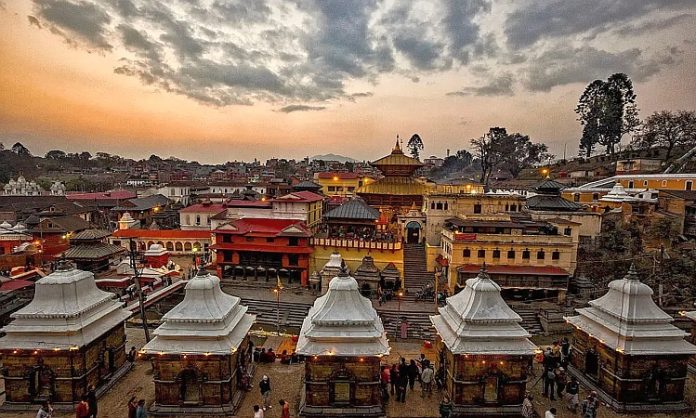Kathmandu: As many as 71 heritage sites in Nepal’s Pashupatinath area, which were partially or extensively damaged in the country’s devastating 2015 earthquake have been restored, reports said on Wednesday.
Ninety heritage sites in the Pashupatinath area, which comes under the UNESCO World Heritage list, were damaged by the 2015 quake.
“As many as 71 heritage sites damaged by the 2015 April earthquake in the Pashupatinath area have been restored,” Ghanshyam Khatiwada, the Executive Director of the Pashupati Area Development Trust, said.
Also Read: India-Nepal to sign MoU for biodiversity conservation
Pashupatinath Temple is a famed Hindu temple located in Nepal’s capital Kathmandu. The restored heritage sites included the Jayabageshwori Temple, Mahasnanghar, Kulanand Jha Sattal, Guheshwori-based Seto Sattal, Lal Ganesh Temple, Amarakanteshwor Temple, the report said.
The reconstruction of the Vishwaroop Temple is taking place under a multi-year contract. However, 16 heritage sites are still awaiting the rebuilding works to start.
Earthquake of 7.8 magnitude had rocked Nepal
In April 2015, a devastating earthquake of 7.8 magnitude rocked Nepal, killing nearly 9,000 people and wounding nearly 22,000 others. It also damaged over 800,000 houses and school buildings.
Also Read: 68 killed as plane crashes near Pokhara airport in Nepal
It was reported that 2900 structures with a historical and religious significance were affected, of which 133 had collapsed, 95 were partially collapsed and 515 were partly damaged.
Heritage structures not maintained well
In Nepal, the Ancient Monuments Preservation Act empowers the Department of Archeology to be responsible for all heritage sites in the country. Inadequate resources and mechanisms to implement projects and protect heritage sites, and conflicting interests of multiple stakeholders involved in conservation and maintenance of heritage structures, have led to a situation where there are problems with the implementation of regular maintenance of all cultural heritage structures. This resulted in extensive damage to cultural heritage structures due to the 2015 Nepal Gorkha earthquake.
Kathmandu Valley has seven monuments declared UNSECO sites
Kathmandu Valley has seven monument zones included in the list of UNESCO World heritage sites, revealing a wide range of historic and artistic achievements over the centuries. These monument zones include the Durbar Squares of Kathmandu, Patan, and Bhaktapur, the Buddhist stupas of Swayambhu and Boudhanath, and the Hindu temples of Pashupatinath and Changu Narayan. All these cultural heritage structures have unique features and depict the traditions and culture of Nepal.
Also Read: Bodhgaya to be developed Varanasi way, 73-acre land identified
Besides this, the design approach, materials, and craftsmanship adopted during the construction of these structures represent the ancient remarkable architectural typologies. Most of these cultural heritage structures are built using stone masonry and brick masonry bonded with mud mortar or lime mortar, which easily deteriorate with time (in a few of these structures the main frame is made of timber), thus making them susceptible to damage under lateral shaking.
In general, Nepalese temples can be broadly grouped into three categories based on their architectural pattern: Pagoda style, Stupa style, and Shikhara style, all of which vary from each other in their construction methods.




